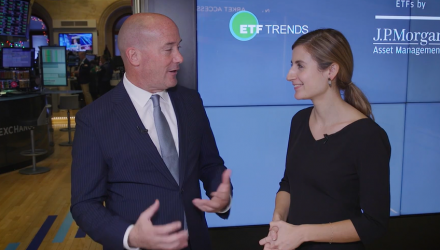“I think more active within fixed income is called for, and even just more granularity,” said Azzarello. “So, I agree the Barclays AGG used to be the be all end all for the fixed income market. Not anymore. We know we can do better than that, we can have a better duration profile, we can get a bit more income and just be a little bit susceptible to market moves if we’re smarter with how we implement within fixed income.”
With that being said, as more investors begin to add fixed income to their portfolios, it will take more of a strategic bent. This is especially so since the Federal Reserve said during its fourth and final rate hike in December 2018 that it will do more reassessing, which could mean lesser rate hikes in store for 2019.
With the short-term strategy of lesser rate hikes in store, the long end of the curve, however, is much less clear. As such, investors will need more guidance for their fixed-income portfolios.
“Fixed income needs a little bit more finessing right now because the Fed is raising rates on the short end,” said Azzarello. “Yet, the long end is a little bit of a wild variable—rates have been going up, but also down in the 10-year yield so I think you need a little bit more finesse with your fixed income strategy.”
That strategic allocation into fixed-income means that investors should also look overseas for opportunities. While it’s tempting to simply allocate capital into the domestic bond markets, investors shouldn’t ignore the international credit markets, especially with countries like China becoming less stringent with respect to foreigners accessing their once hard-to-penetrate markets.
Overseas Opportunities for Fixed Income
Like sports, it can also be easy to cheer for the home team when it comes to making investments. In the U.S. bond markets, this would be akin to investors keeping their capital allocated domestically.
However, as the U.S. capital markets make their way out of the late cycle, it can be opportunities overseas that can be more attractive alternatives.
“So home bias within equities is something that’s most investors are very aware of,” said Azzarello. “I don’t think investors are as aware of their home bias within fixed income. And it’s, it’s pretty intense so most American investors, 93% of their fixed income is domestic US. We say you need to look outside for more income and more diversification. So look abroad.”
Certain areas overseas may be earlier in their market cycles compared to the U.S. so issues like rate risk are not yet a concern. Additionally, bond markets overseas could provide more competitive yields when compares to those of the U.S. where a credit risk in a late market cycle could pose a concern.
“U.S. fixed income markets did everything they needed to do as an investor and that’s just no longer the case,” Azzarello added. “ECB, Bank of Japan—no one is raising rates any time soon around the world so there’s still opportunities there. Then even credit within other parts of the globe look good as well.
To watch the entire latest “In the Know” show, visit: https://am.jpmorgan.com/us/en/asset-management/gim/adv/insights/etfs-in-the-know.
